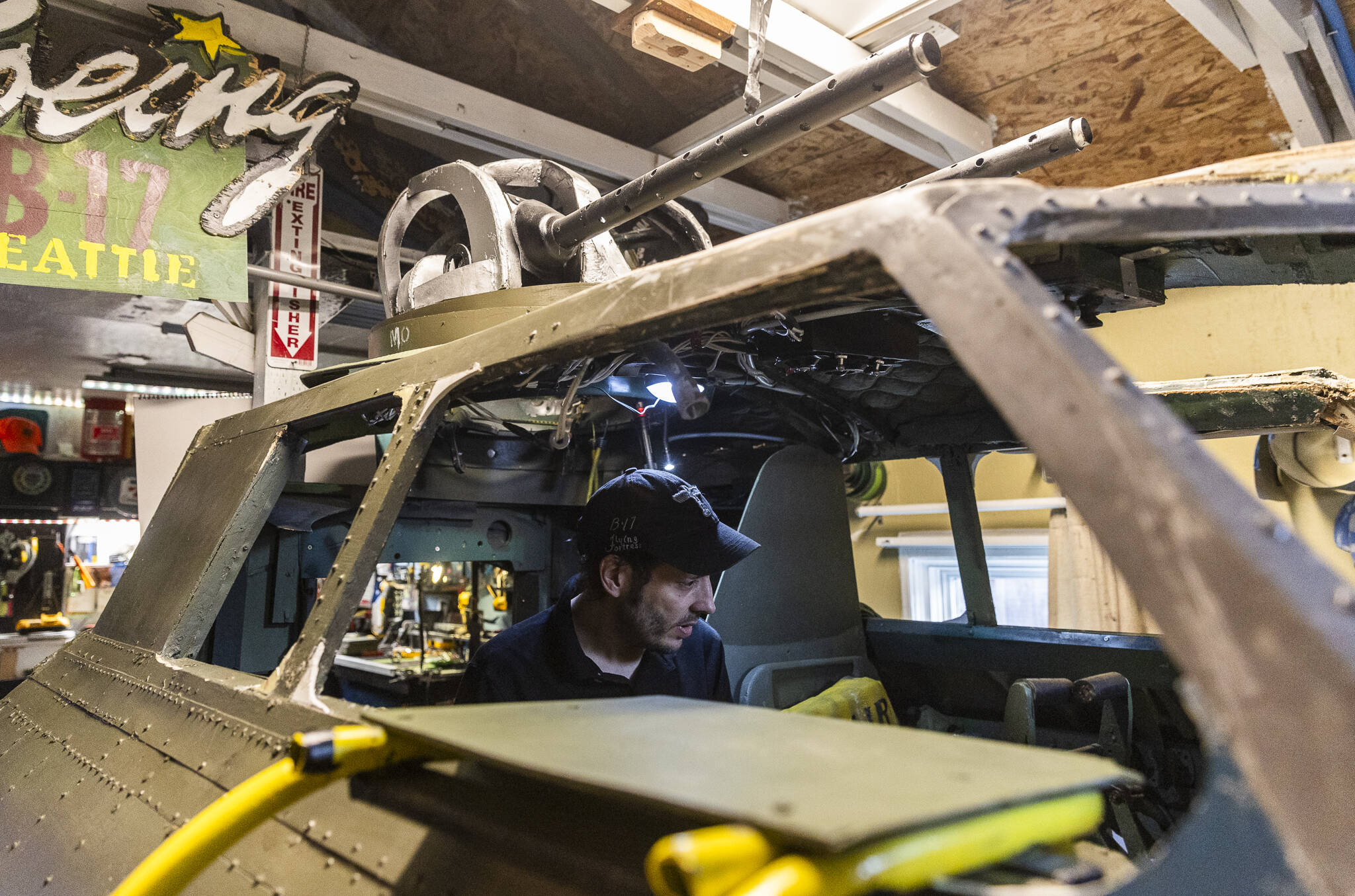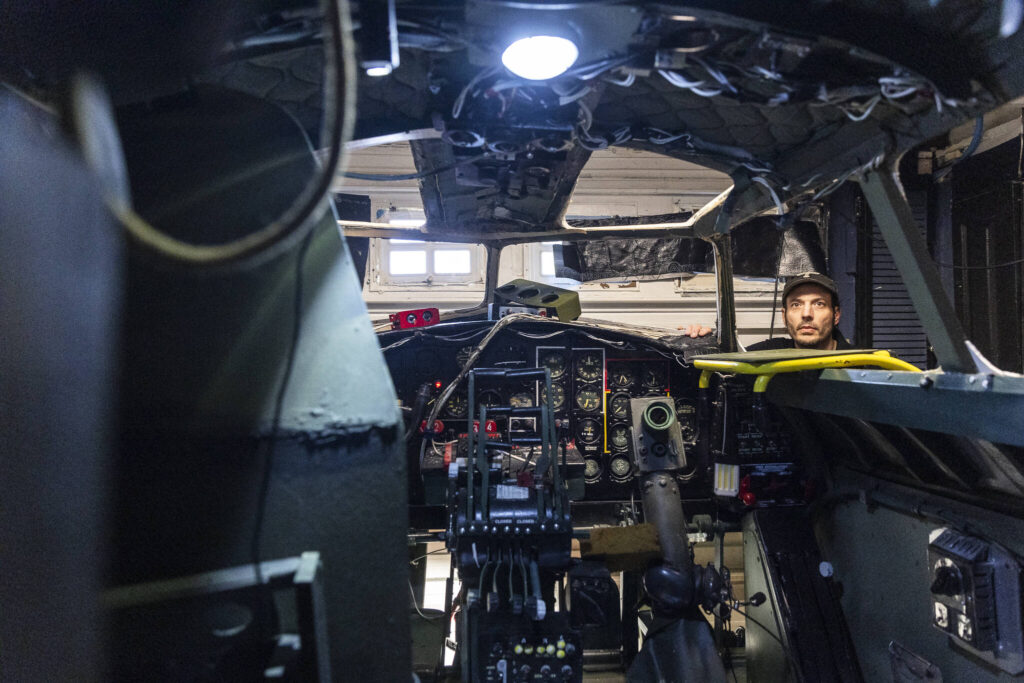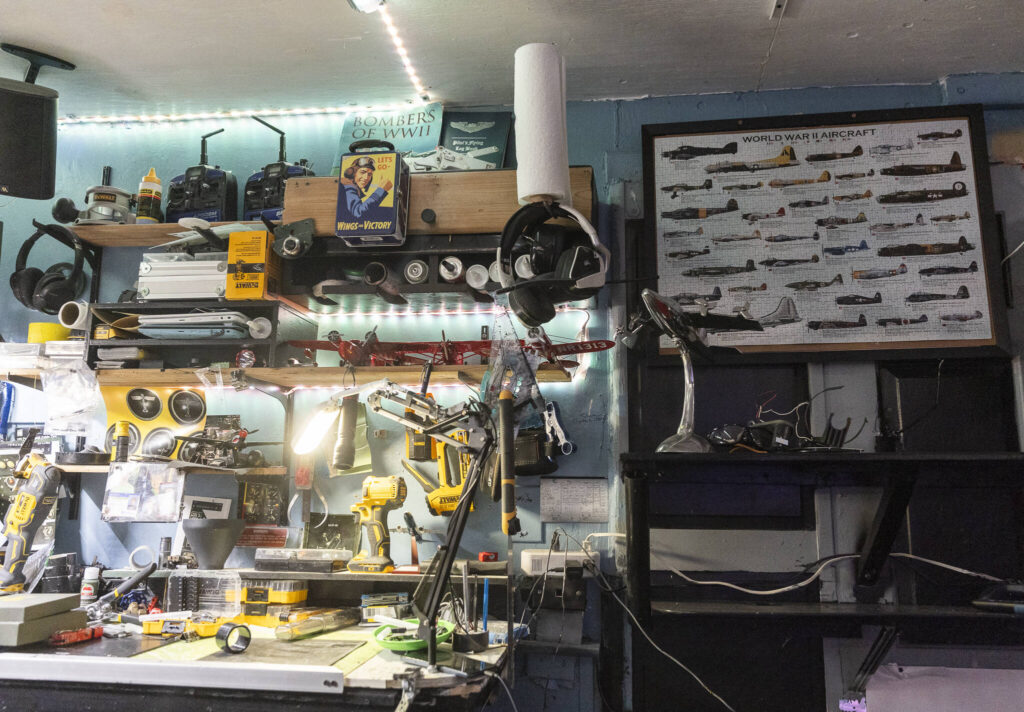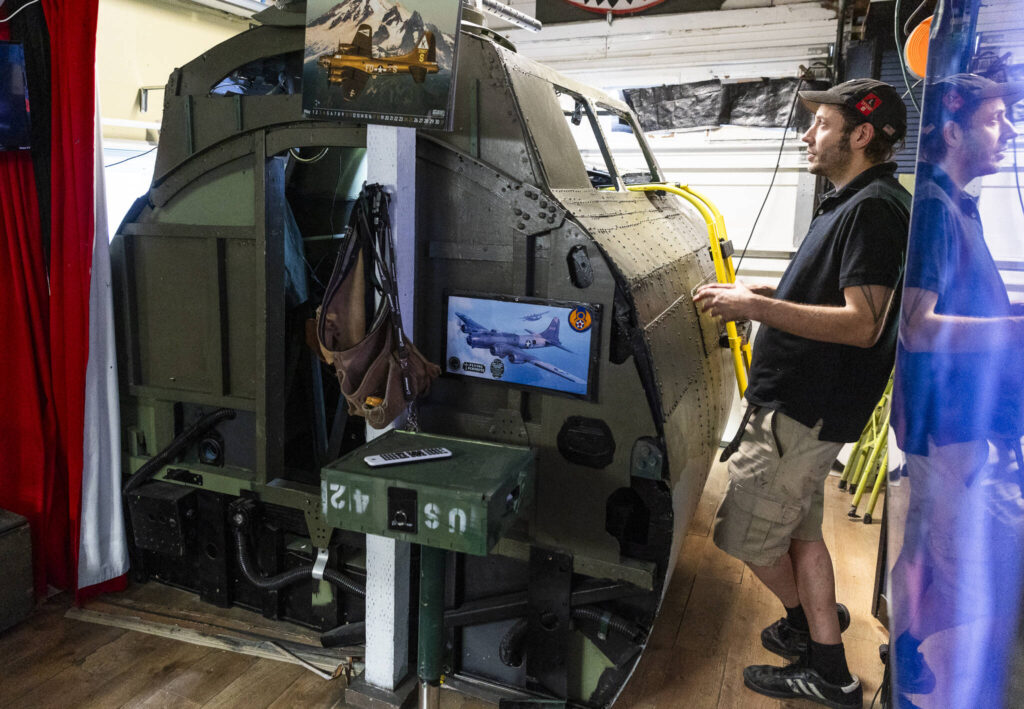EVERETT — Thatcher Johnson has spent years building stuff.
A former aerospace repair worker, Johnson had built replica airplane equipment, replica plane seats and a full 737 flight simulator in his garage. He even built a replica ejection seat as a gift for a former Navy pilot who had survived two ejections of his own. (No, Johnson’s seat did not actually eject.)
But Johnson’s biggest challenge has come in the form of his latest project: a life-size replica of a B-17 bomber cockpit, built entirely in his north Everett garage.
Since he started the project three years ago, he’s picked up building materials from local hardware stores and spent hours in the cramped space building the cockpit. His obsessive research sent him sourcing real B-17 plans from anonymous sources online and watching archival footage to get clues as to how workers assembled the planes in the 1940s.
Why the B-17?
“Seattle, man,” Johnson said.
The Boeing B-17, known as the “Flying Fortress,” was a military bomber with a legendary history due to its use during World War II. By the end of the war, the United States had built 12,726 of Boeing’s long-range bombers, according to the Museum of Flight in Seattle. Most of them — a total of 6,981 — were built in a Seattle Boeing plant.
The bombers were not pressurized, meaning pilots were exposed to the elements while flying. Crews had to fly in freezing conditions and wore oxygen masks to breathe, according to the British Imperial War Museums. A crew of 10 squeezed into the tight space for hours at a time during bombing runs.
Working on the cockpit and seeing the conditions pilots had to fly in made the history feel much more real for Johnson, he said.
“I’ve got a lot more respect for the guys,” he said. “I just couldn’t believe what they did over there.”
Over the years, Johnson has had to scrap the cockpit and rebuild it multiple times if mistakes were made or measurements were wrong. He still isn’t finished with cockpit and will consider it complete when he goes about as far as he can in regard to the detail involved. He hopes that’s soon.
“I’m kind of wanting to get out of the garage a little bit more,” Johnson said.
Johnson’s replica cockpit isn’t a secret, but he hasn’t yet shared his work much with others who are unaware of the bomber in his garage
“People who want to know what I’m doing, I tell them,” Johnson said. “But I don’t go up and say ‘Hey man, there’s a B-17 in my garage.’”
Once it’s built, Johnson will donate the cockpit to a museum. He’s already agreed to donate it to one, he said, but couldn’t share where it’s being sent as it hasn’t yet been publicly announced.
After building the replica cockpit, Johnson wants to take a break, as it’s been “a lot of work,” he said. But he also still has hopes of starting a new replica — a jet fighter cockpit — at some point in the future.
Will Geschke: 425-339-3443; william.geschke@heraldnet.com; X: @willgeschke.
Talk to us
> Give us your news tips.
> Send us a letter to the editor.
> More Herald contact information.




























